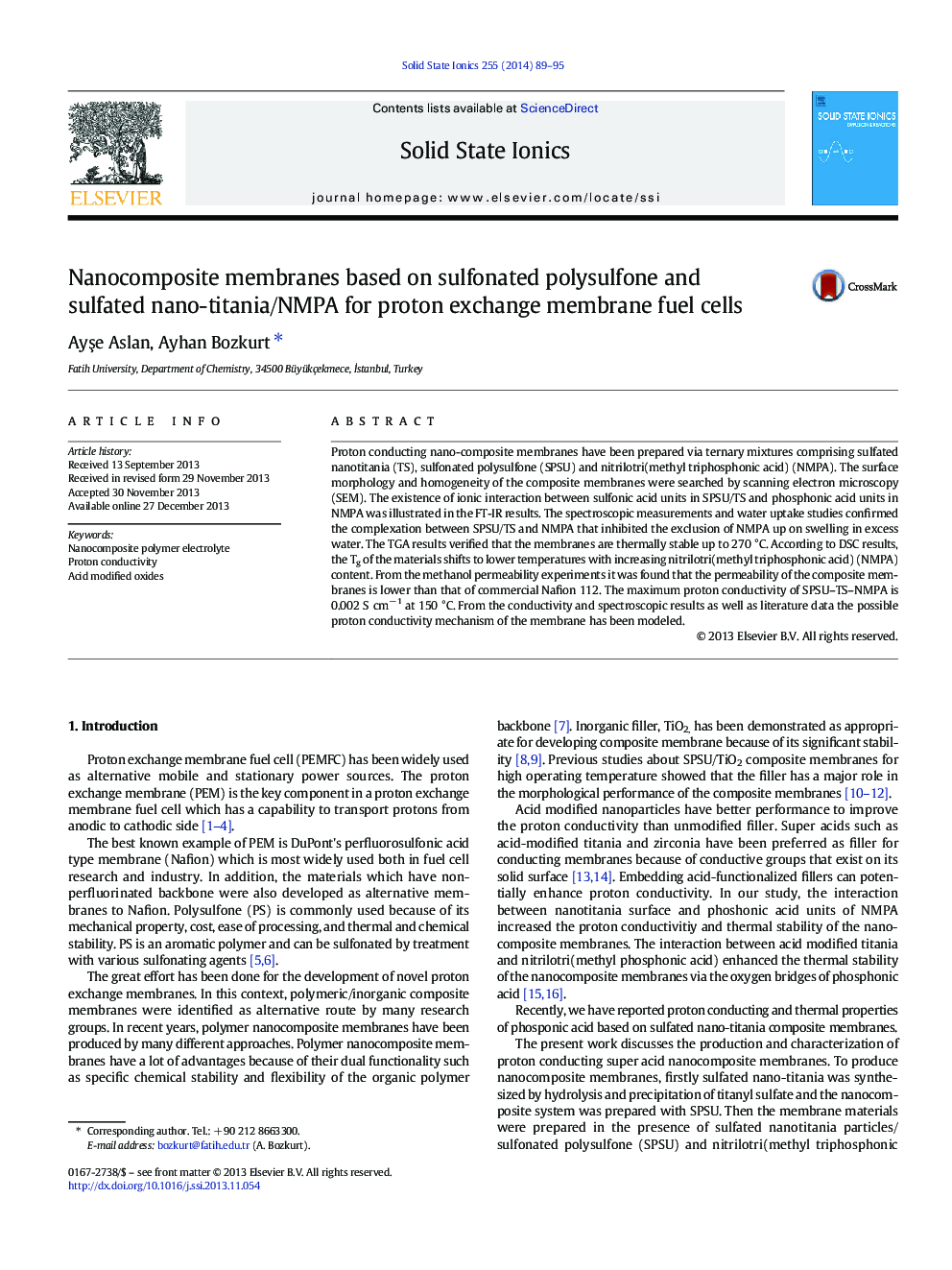| Article ID | Journal | Published Year | Pages | File Type |
|---|---|---|---|---|
| 1295931 | Solid State Ionics | 2014 | 7 Pages |
•Novel proton conducting nanocomposite membranes were synthesized and characterized.•The new nanoparticle is bifunctional including both phosphonic and sulfonic acid units.•The functional nanoparticles enhanced proton conductivity and thermal stability.
Proton conducting nano-composite membranes have been prepared via ternary mixtures comprising sulfated nanotitania (TS), sulfonated polysulfone (SPSU) and nitrilotri(methyl triphosphonic acid) (NMPA). The surface morphology and homogeneity of the composite membranes were searched by scanning electron microscopy (SEM). The existence of ionic interaction between sulfonic acid units in SPSU/TS and phosphonic acid units in NMPA was illustrated in the FT-IR results. The spectroscopic measurements and water uptake studies confirmed the complexation between SPSU/TS and NMPA that inhibited the exclusion of NMPA up on swelling in excess water. The TGA results verified that the membranes are thermally stable up to 270 °C. According to DSC results, the Tg of the materials shifts to lower temperatures with increasing nitrilotri(methyl triphosphonic acid) (NMPA) content. From the methanol permeability experiments it was found that the permeability of the composite membranes is lower than that of commercial Nafion 112. The maximum proton conductivity of SPSU–TS–NMPA is 0.002 S cm− 1 at 150 °C. From the conductivity and spectroscopic results as well as literature data the possible proton conductivity mechanism of the membrane has been modeled.
